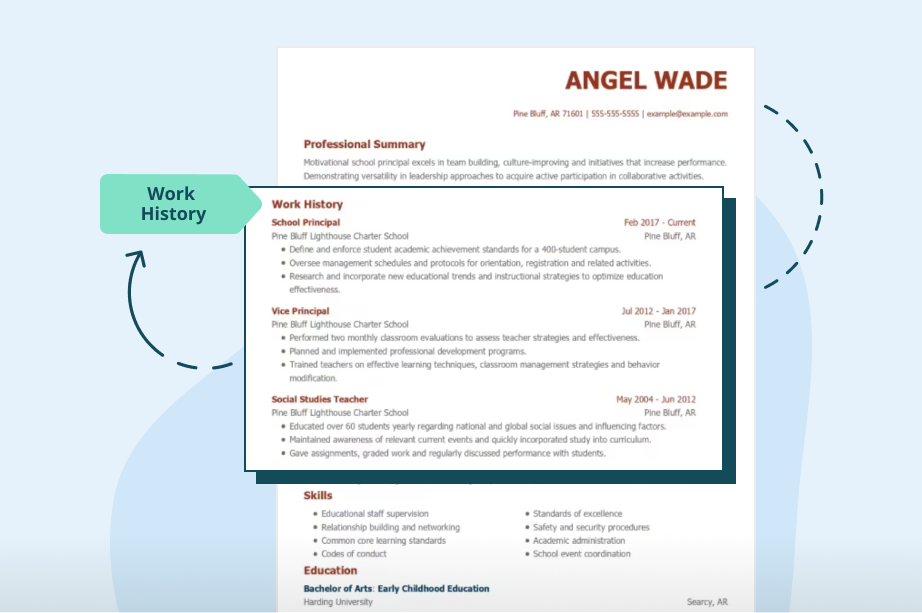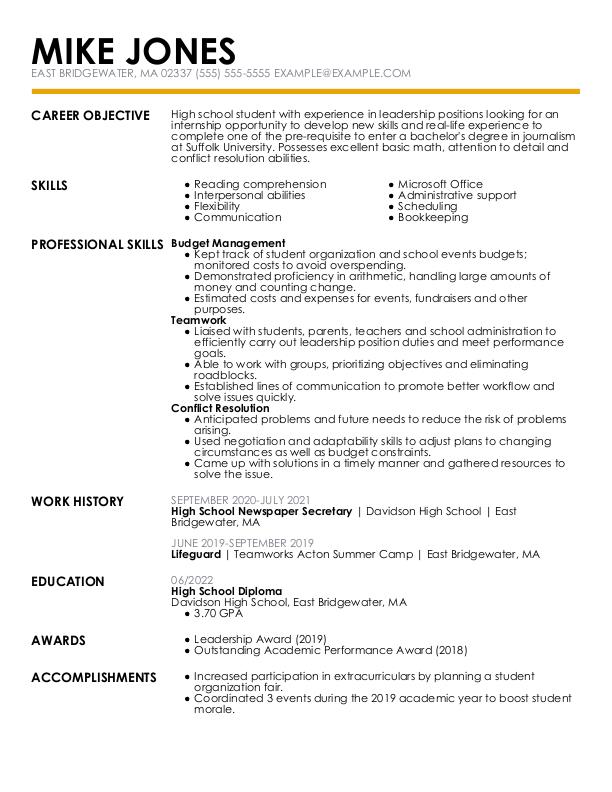Whether you’re a first-time job seeker or you’re changing careers, a functional resume is the secret weapon you need to make a strong impression on employers.
A functional resume helps you highlight the achievements related to your skill set, so you don’t have to depend on a traditional work experience section if yours is limited or unrelated to your new career path.
In this guide, you’ll find tips and resources to help your strengths shine, plus helpful tools like our Resume Builder to create a professional and effective resume.
What Is a Functional Resume?
The functional resume, also known as the skills-based resume, is one of the three recruiter-approved resume formats that organizes a resume’s layout to highlight an applicant’s unique strengths.
You may ask, “What does a functional resume highlight?” A functional resume can highlight your skills, match them to the job posting, and increase the chances of getting an interview, even when you don’t have the required experience.
The functional format allows you to market your knowledge and downplay potential red flags like a lack of formal expertise or career gaps.
PRO TIP:
Use a functional resume to spotlight your technical skills and abilities first, moving formal work history to the bottom. This format lets you lead with how your strengths and career goals align with the role, making a strong case before employers even glance at your job history.
Functional Resume Key Sections
The functional resume should include the following sections in this order. Notice how the emphasis is on skills while the work history remains minimal.

- 1
- 2
- 3
- 4
- 5
- 6
Contact information
- Start with a standard section at the top of the resume that includes your name, number, email, and location.
Resume summary
- Include a brief introduction to persuade recruiters to read your resume.
Summary of qualifications
- Share three to four significant accomplishments related to the role’s required skills.
Professional skills
- Add multiple sections based on specific skill types like language, technical, programming or computer skills.
Work history
- Use this simplified section to list previous job titles, employers, and years of employment.
Education
- Highlight job-relevant degrees or certifications and dates of completion.
Who Should Use a Functional Resume?
The functional resume is often the best choice for inexperienced job seekers, though it’s less common and can be trickier for some ATS systems to process. Weigh its pros and cons against your experience and target role, and explore our ATS-friendly functional templates.
- Recently graduated from school or college
- Changing careers
- Freelancing
- Have less than three years of experience in the industry
- Have gaps or many different jobs throughout your work history
- Reentering the workforce after a long absence
- Spent less than one year at two or more jobs
- You have over three years of experience
- Have little to no work gaps between jobs
- Followed a direct career path
- Wish to highlight promotions or career growth
Comparing the 3 Resume Formats
If you’re still unsure whether the functional resume format is the ideal choice, learn about the other two resume formats and compare them to decide on the one that will best highlight your strengths.
The chronological resume format is best for job seekers with a strong work history in the same field, focusing on work experience listed in reverse-chronological order. Its pros include being easy for recruiters and applicant tracking systems (ATS) to read, and it effectively shows career growth and steady employment. However, its cons are that employment gaps or frequent job changes are more obvious, and it’s less ideal for those changing careers or with little experience.
The functional resume format is ideal for recent graduates, career changers, or those with employment gaps because it focuses on skills and abilities rather than job titles and dates. This format highlights transferable skills and de-emphasizes employment gaps or unrelated job experience. However, some recruiters may be less familiar with this format, and it might raise questions about a lack of work history.
The combination resume format is best for experienced professionals with strong skills and work history, focusing on skills first, followed by a chronological work history. Its advantages include blending the best aspects of different formats and showcasing both abilities and experience. However, it can be longer and more difficult to format, and may not always be ATS-friendly if not done correctly.
9 Functional Resume Examples
Functional Resume Template
[with Tips]
[Your Name]
[Your Address]
[City, State ZIP Code]
[Your Email Address]
[Your Phone Number]
[LinkedIn Profile URL]
Resume Summary
[Insert your summary here. This should be a brief statement highlighting your core qualifications and career goals.]
Summary of Qualifications
- [Insert qualification #1]
- [Insert qualification #2]
- [Insert qualification #3]
- [Insert qualification #4]
[Type of] Skills
- [Add relevant accomplishment or responsibility related to Skill 1]
- [Add relevant accomplishment or responsibility related to Skill 1]
- [Add relevant accomplishment or responsibility related to Skill 1]
- [Add relevant accomplishment or responsibility related to Skill 1]
[Type of] Skills
- [Add relevant accomplishment or responsibility related to Skill 2]
- [Add relevant accomplishment or responsibility related to Skill 2]
- [Add relevant accomplishment or responsibility related to Skill 2]
- [Add relevant accomplishment or responsibility related to Skill 2]
[Type of] Skills
- [Add relevant accomplishment or responsibility related to Skill 3]
- [Add relevant accomplishment or responsibility related to Skill 3]
- [Add relevant accomplishment or responsibility related to Skill 3]
- [Add relevant accomplishment or responsibility related to Skill 3]
Work History
[Job Title #1] | [Company Name #1]
[Location], [Year]
[Job Title #2] | [Company Name #2]
[Location], [Year]
Education
[Degree Earned]
[University/College Name], [Location]
[Graduation Date]
- [OPTIONAL: Add relevant coursework or academic achievements]
- [OPTIONAL: Add any honors or awards received]
Functional Resume FAQ
What does a functional resume highlight?
A functional resume highlights your skills and accomplishments instead of focusing on job history. It’s ideal for entry-level job seekers as well as career changers or those with employment gaps. This format emphasizes your strengths and potential, helping employers quickly assess your fit.
VUse powerful words to describe yourself to make your resume more persuasive.
Who is a functional resume best for?
The functional resume format is best for job seekers with:
- Non-linear career paths
- Employment gaps
- Career changes
- Recent graduates
- Entry level
- No to limited experience
Visit our no-experience resumes to learn how to create a job-winning resume — even without experience.
Why is a functional resume format best for students and teenagers?
The functional resume is ideal for students and teenagers because it emphasizes transferable skills, academic achievements, and extracurricular activities instead of job history. This format helps you showcase your potential clearly.
Explore our high school resume templates to see how others highlight their strengths.
Why is a functional resume good for people with a gap since their last job?
The functional resume format deliberately adds more information about your responsibilities and achievements under skills-based sections to draw attention away from your work history. This helps you prove yourself as a well-trained candidate, even after time away from the workforce.
Are functional resumes ATS-friendly?
Some applicant tracking systems (ATS) may have trouble parsing nontraditional formats. To improve your chances of passing through these filters, include relevant keywords from the job description and keep section headers clear.
You should also add a brief work history section to support ATS readability.











